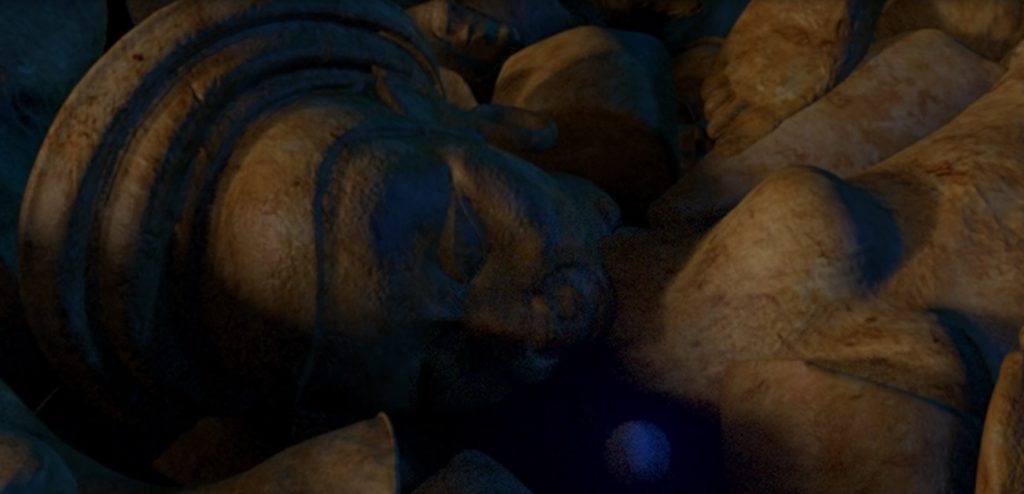At one level, this collaboration visualizes the choreography in Odissi movement paying attention to its movement intention, duration, consistency, and transition. One the other, it brings to the fore the culturally suppressed information latent within the Odissi choreography itself. It is the Mahari incarnate with its curvilinear tracing and the spiral mapping of the Meena-Danda in each and every movement of the Odissi body. The Mahari haunts it, embodies it, and challenges it for a face-off in this motion capture framework. The purpose is manifold including the presentation of the choreographic traces of the twisting Odissi body while finding the source of these twists. The screen becomes a window to the Mahari creating a small dent in the Odissi body to see her in full potential. She is Sakti, a principle of empowerment. Power is gendered in Sakti and not abstract as Foucault would have us believe. Like the numerous variants of Sakti with both benign and grotesque elements, the Mahari being the embodiment of Sakti presents the opportunity to work with it.
Conroy works on two models, one based on the powerful goddess while the other based on an Alasa-Kanya. This presents us an opportunity to replicate the actual into the digital, which demanded exact details of the number of veins and ribs visible in the sculpture. Unfortunately, the model for Sakti did not see the light of the day because it kept on encountering a number of problems during its rendering. Also, Conroy was thoroughly displeased with the cartoonish look of his created avatar that according to him resembled more the Disney villainous characters than Indian sculptural and mythological beings. If the figure is not able to evoke the cultural notions of beauty, power, aesthetics, and grotesqueness, then there is no point in continuing along that series of actions. Hence, we scrapped our first compositional choice that was a dialogical morphing between the Sakti and the Alasa-Kanya.
The Salabhanjika, or the Alasa-Kanya pulling a tree branch with her right hand, inspired our final iteration of the model, who I name Alasa. Once we finalized on the 3D model, we decide to work ground up instead of top down as we plan to have the model build itself in and through movement from a set of fragments. We want the fragments of the various research strands or the stone ruins inform the visual formation of the 3D model. We start working with the fragments of the past as fragments of the body come together to then eventually move in unison.
The final result is not a solid body. It is an apparition and a conglomeration of loosely joint fragments. Each fragment connects with the whole with a gentle touch, bobbling on the body and making its boundaries porous and illimitable. There is no unified body until the very end as the ending becomes the coming together of the different worlds but only through their fragmentation. The Mahari is the residue of such a fragmented body, at once bold and the beautiful.
Stone Texture :-
Stone Fragments animated by my Odissi movement :-
Pillared 3D Environment :-
Moving to the walk cycle with markers :-
The Coming together from Fragments:-
The Final Version of Out-ing Mahari: Sculptural Fragments









